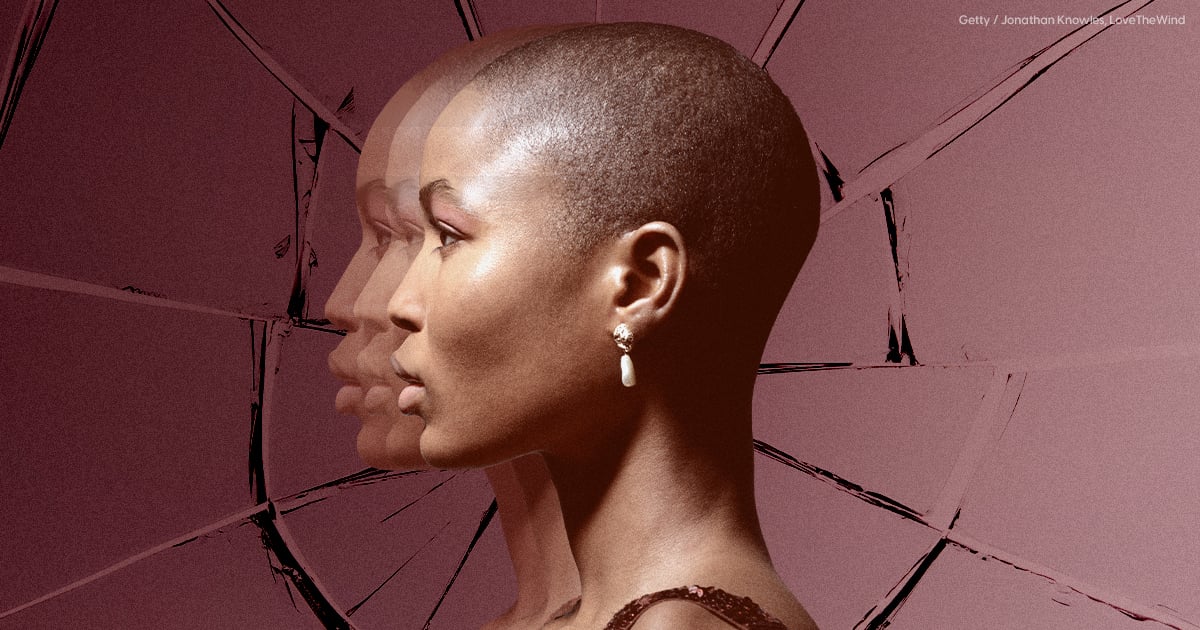After President Biden announced on Sunday that he was exiting the presidential race and endorsing Vice President Kamala Harris to replace him, the excitement and memes started pouring in. Many folks celebrated the fact that a Black and Asian American woman could become president. But some also expressed worry. As one X user wrote, “I’m behind @VP 100% to deliver this election – she can win. But today has provided a quintessential case study on the Glass Cliff Theory in politics. It’s not enough to call us the ‘backbone of the party’ if we must always be the last resort with everything on fire. Period.”
Many of us are familiar with the inevitable reality of the “glass cliff effect,” in which Black women are picked to lead institutions or organizations when they are on the brink of collapse or in dire straits. The setup then often contributes to the paradox of “last in, first out,” wherein Black women are the last to be hired and the first to be pushed out in a given workplace.
Black women are told from childhood that we have to be twice as good to get half as much, understanding that even when we are twice as good and we finally get that coveted leadership position, it will come with the heavy burdens of tokenism, misogynoir, undermining, and more, all rooted in anti-Blackness.
Experts Featured in This Article
Adia Harvey Wingfield, PhD, a professor of sociology at Washington University in St. Louis.
Briana Young is a humanities scholar and social work practitioner.
Immaculata Ajuogu is a researcher and cultural anthropologist.
For Briana Young, a humanities scholar and social work practitioner, the double standards Black women leaders face in the workplace are clear. “The Black women in leadership I’ve worked with unfortunately still find themselves subject to validation through the biased standards of the institution; though their work and expertise could speak for itself, it is not allowed to in a place where they are not valued as equal counterparts,” she says. “Despite their diligent efforts and expertise, they are compelled to continually ‘prove themselves.’ . . . In essence, Black women must consistently exert extra effort to attain an equivalent level of trust and respect.”
Adia Harvey Wingfield, PhD, a professor of sociology at Washington University in St. Louis and the author of “Gray Areas: How the Way We Work Perpetuates Racism and What We Can Do to Fix It,” has extensively researched the experiences of Black women in leadership positions. She agrees that these realities are deeply rooted.
“The research shows that there are many obstacles for Black women both in attaining and retaining leadership roles. They report less access to mentors who can help facilitate their advancement, and if they do make it to leadership roles, often encounter the glass cliff phenomenon,” she says. What’s more, she adds, “these are long-standing trends in organizational settings and have not shown significant change over the last few years.”
Indeed, this is a prime moment for us all to reflect on the systemic reasons Black women in leadership end up failing – and how we can work to create a different outcome.
The Reality of Becoming a Black Woman Leader
Back in January, the conversation around Black women leaders ignited after Claudine Gay resigned as the first Black woman to serve as president of Harvard – for many, the ordeal revealed that Black women play as both shield and target for elite institutions.
The glass cliff effect, first coined by University of Exeter researchers in 2005, continues to be an unfortunate reality for Black women leaders. Anytime Black women are appointed to positions of leadership, they are hyper-visible and hyper-scrutinized in the workplace, and are often relegated as the token diversity hire. As a result, Black women are measured by unrealistic standards and end up being scapegoated by the organization’s inability to support their leadership success.
“Observing the glass cliff effect unfold in various institutions, my concern runs deep. It highlights that the apparent progress in opportunities for Black women was constructed on an unstable foundation,” Young says. For her, watching this happen time and again is “disheartening” and underscores the “formidable challenge of dismantling sexist and racist norms.”
“It’s far too easy for all people . . . to believe that it’s Black women’s fault that they were unsuccessful.”
It is important to note that the glass cliff effect isn’t the sole reason Black women are undercut as leaders. Many factors are systemic as well as operationalized in the workplace. It’s not one isolated event; it’s an ocean that envelops one’s entire work experience.
As Dr. Wingfield explains: “The glass cliff effect is part of – but not the only reason – why we see so few Black women in visible, high-ranking leadership roles. Other factors include biases in hiring, unwelcoming organizational cultures, lack of access to mentors, blocked internal routes to promotion, and, unfortunately, good old-fashioned discrimination.”
At play in Dr. Gay’s resignation, of course, was also a clear backlash to DEI efforts at academic institutions. “I think the way opponents have presented Dr. Gay as an unqualified DEI hire is probably familiar to other Black women who have had their professional qualifications questioned, doubted, and dismissed,” Dr. Wingfield explains. “Research shows that Black women are more likely than women of other races to express interest in leadership, but are less likely to find the support from colleagues and managers to move into these roles.”
According to Immaculata Ajuogu, a researcher and cultural anthropologist who works in academia, difficulties only abound once Black women rise to leadership roles. Within these positions, they are often faced with “bullying, lack of support, and the real issues of burnout in the workplace.” Many of these organizations are still failing to view Black women as women worthy of a dignified life and respect – and thus are communicating to all Black women and girls that their only worth in society is in their labor. Racism in the workplace is making Black women sick, literally, and in some instances leading to their deaths.
Indeed, Dr. Gay’s resignation was so impactful within this conversation because of the visibility and scrutiny associated with it. As Jan Abernathy, the chief communications officer at an independent school in New York and a trustee on several independent school boards, explains: “How sad is this? It’s far too easy for all people – including Black women and girls – to believe that it’s Black women’s fault that they were unsuccessful in leading an institution to success, rather than realize that they may have been displaying heroic efforts to save something that couldn’t be saved. It’s devastating to see excellent Black talent leaving institutions like schools where they could influence the next generation of leaders.”
Charting a Different Future For Ourselves
It’s important to consider what Black women can do differently moving forward – even if these institutions take much longer to evolve. And first and foremost, it comes down to realizing that no leadership role, title, or position is worth our mental and physical well-being.
“As Black women, we must continue to speak our truth regardless of the distractions.”
The physiological impact of weathering what we endure in the workplace has grave consequences. Take the tragic and unexpected loss of Antoinette Candia-Bailey, the vice president of student affairs at Lincoln University of Missouri. She died by suicide earlier in January. In emails, she alleged workplace bullying and harassment.
Many institutions have yet to understand what it means or what they must do to reduce harm; in the end, Black women must save themselves, because no one will do that for us. We’ll achieve this by mentoring and supporting each other, finding value in showing up authentically and unapologetically, and, most importantly, not being afraid to leave a harmful, toxic work environment.
“As Black women, we must continue to speak our truth regardless of the distractions,” Ajuogu says. “Even though society and the workplace depict us as ‘hard,’ it takes unapologetic leadership to speak up and speak out when there is injustice, being firm and bold enough not to turn a blind eye to oppression. Black women in leadership should be championed, and this is what I have and will continue to do.”
Until institutions can put structures and systems in place that support Black women and dismantle racial harm in the workplace, this becomes a reality for all of us. The responsibility is on all of us to try to rectify these problems for the good not only of Black women, but workplaces and society as a whole. As Dr. Wingfield notes, “Ultimately, when Black women face these additional barriers to leadership, they aren’t the only ones who are affected – whether through missed opportunities, employee turnover, or dampened ambitions, everyone loses out.”




